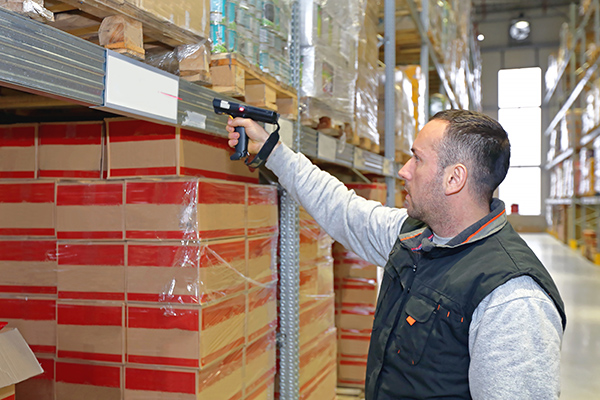Other Voices: Why are my warehouse labels starting to curl and fall?
These 11 missteps are the most common causes of label issues.
Editor’s Note: The following column by Brian Blair, manager of installation services for ID Label, is part of Modern’s Other Voices column. The series features ideas, opinions and insights from end-users, analysts, systems integrators and OEMs. Click here to learn about submitting a column for consideration.
———
Properly and safely installing rack labels on warehouse beams is a task best left to professionals. It typically requires specialized equipment, detailed planning and careful preparation to avoid any issues or errors.
Nonetheless, there may be times—such as relabeling a section of racking—when managers opt to perform the installation in-house with their own warehouse personnel.
To help you avoid any installation issues, I put together this short primer on the key factors that can lead to peeling or falling labels from do-it-yourself installation projects.
Reasons warehouse labels can lose their adhesive value
Dusty, dirty or grimy beams
Dirt and dust can quickly accumulate on beams during storage and installation, which can significantly diminish a label’s adhesive values. If the back of a peeling label is dotted with dirt, it likely means the beam wasn’t wiped clean prior to applying the labels. It’s best to wipe down the surface with a clean, damp rag and some isopropyl alcohol. This cleans the surface and removes any moisture to ensure optimal adhesion.
Beams were treated with improper chemicals or solutions
Cleaning solutions must be free of oils or citric acids. Harsh chemicals and detergents do not interact well with some label adhesives. I know of an instance in which workers treated beams with an oily polish prior to labeling and assumed the label’s adhesive had failed.
Paint outgassing
Newly painted beams can emit fumes (outgassing) for several weeks, which can diminish the adhesive values of some label constructions.
Moisture
Humid conditions create condensation on warehouse beams. Labels applied in this environment can easily curl, crinkle, peel or fall off the beams. As noted above, wiping beams with isopropyl alcohol helps to wick away moisture and prepare the surface for labeling.
Application over layers of old labels
Scraping off old labels is time-consuming. But simply applying new labels over multiple old ones is a recipe for inaccurate scans and labels that curl and peel. Start with a clean rack surface and apply a cover-up solution. This will make future relabeling hassle-free.
Wrong label construction for operating environment
If you’ve got a freezer environment, for instance, it’s critical to use an adhesive specified for those temperatures. Even if you’re using the right freezer label, it might require installation in an ambient setting before the temperature drawdown.
Rough beam surfaces
If the beam surface isn’t smooth, labels may not stick. I’ve seen instances where weld splatter on the beams was an issue. And other times where poorly painted refurbished beams were left with rough surfaces that over time allowed air to get behind the label.
Structural steel beams
Structural pallet racks are made from heavier steel and can have a slightly less smooth finished surface than roll-form steel. Labels applied to structural steel should have an aggressive adhesive for best performance.
Beams not acclimated to environment
Be sure to give new racking time to get acclimated to the operating environment before labeling, especially in winter months. One company started to install racking as it was brought off the trucks, despite sub-zero temperatures outside. Workers immediately began placing labels as sections were completed, but the steel was so cold it didn’t allow for proper adhesion. Ultimately, new labels had to be produced and the entire installation redone.
Labels are the wrong size
Make sure the labels are the right height and width for your beams. If your beam is four inches high, don’t order four-inch high labels. You’ll need to accommodate for any welds, wire deck overhang, and the like.
Poorly applied labels
Although rudimentary, it’s worth noting that proper pressure must be exerted to allow for the best surface adhesion. Warehouse racking comes in a variety of shapes and sizes. The best application method is to use your full hand, including adequate palm pressure, to apply a label smoothly and eliminate any air bubbles.
For additional information, I recommend reviewing a related Other Voices column: “5 Essential Planning Steps for a Successful Warehouse Label and Sign Installation.”













